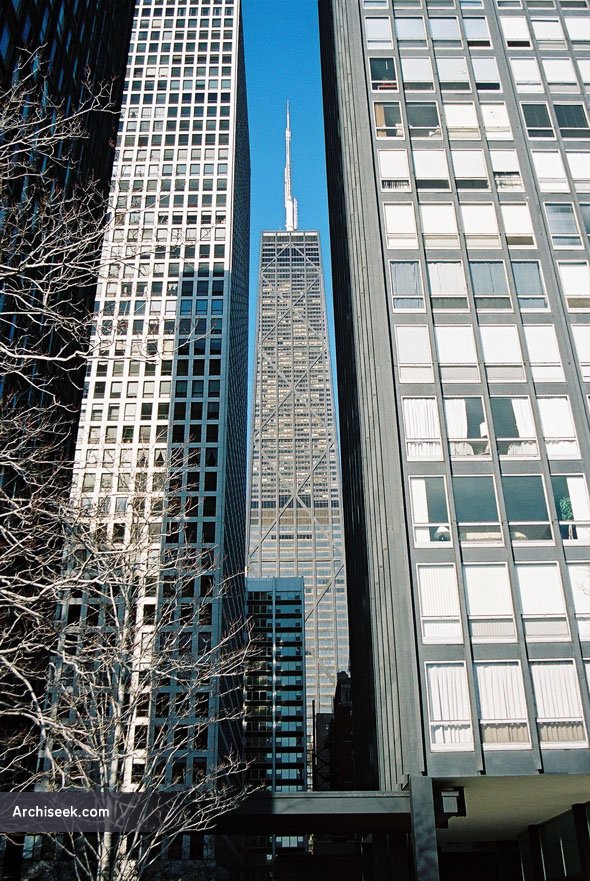Random Building
1969 – John Hancock Center, Chicago, Illinois

Today, the John Hancock Center in Chicago, Illinois, is affectionately known as “Big John,” but it was not always this way. Located on North Michigan Avenue along Chicago’s “Magnificent Mile,” the skyscraper was controversial from the start for its enormous bulk and dark metal exterior. Eventually, it was celebrated for its very brashness, and today it remains one of Chicago’s best-loved icons.
Currently, the John Hancock Center is the twelfth tallest building in the world and the tallest multi-use building in the world. Offices occupy the lower floors of the 100-story skyscraper, and apartments are located on the upper floors of the building. Additional facilities include restaurants, health clubs, a swimming pool, and even an ice-skating rink. It contains the highest residences in the world.
It is actually a super-tall steel tube. Steel columns and beams are concentrated in the skyscraper’s perimeter, and five enormous diagonal braces on the exterior walls of the skyscraper give it extra strength in the wind. The skyscraper also rises from 40,000 square feet at the base to 18,000 square feet at the summit. This tapered design provides additional structural stability against wind forces.
The diagonals completely block the view from two windows on each floor. Ironically, a rental agent has transformed these “blocked” windows into something of a status symbol, it actually costs more money to rent from these rooms.
In the words of the architect, Bruce Graham of SOM: “Situated on prestigious North Michigan Avenue, the one-hundred-story, multi-use tower tapers from bottom to top in order to accommodate the different floor space requirements of a variety of uses. Commercial spaces occupy the base of the tower while parking, office, and residential zones rise above. The tapered form provides structural as well as space efficiency. The exterior columns and spandrel beams, together with the diagonal members and structural floors, create the steel tube. The diagonals, spandrels and columns are clearly articulated to depict the primary elements of this tube. Less than thirty pounds of steel per square foot of floor area were used in the building, equaling that of a forty- to fifty-story traditional tower. The exterior cladding is black anodized aluminum with tinted bronze glass.”
“The design of the John Hancock Center, in Chicago, was influenced by its unique site. Just off Lake Shore Drive, it is surrounded by huge, residential high-rise buildings and yet faces one of the city’s most attractive commercial streets. John Hancock insisted on producing a tall building with residences above, offices and commercial uses below. The search for a new kind of structure which would accommodate multiple uses and also express the scale and grandeur of a one-hundred-story tower, lead Dr. Kahn and me to the diagonal tube. It was as essential to us to expose the structure of this mammoth as it is to perceive the structure of the Eiffel Tower, for Chicago, honesty of structure has become a tradition.”






